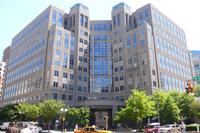WASHINGTON --- Representatives of review panels that looked at last year's shooting rampage that left 12 workers dead at the Washington Navy Yard briefed Pentagon reporters today on their recommendations.
Defense Secretary Chuck Hagel appointed an independent panel co-chaired by retired Navy Adm. Eric Olson and former Assistant Secretary of Defense Paul Stockton to take a bigger-picture look at the challenges of revamping the security clearance process in the United States.
The panel recommends that the Defense Department replace the underlying premise behind installation and personnel security.
"For decades, the department has approached security from a perimeter perspective," Stockton said during a Pentagon news conference. "If we strengthen the perimeter -- build our fences, if you will, against threats on the other side -- we will be secure. That approach is outmoded, it is broken and the department needs to replace it."
Whether threats come from active shooters or online, they already are inside the perimeter, Stockton said. "What the Department of Defense should do is build security from within," he added.
Another panel, chaired by Navy Adm. John M. Richardson, director of the Naval Nuclear Propulsion Program, came to similar conclusions. His team reported 11 major findings in five areas and made 14 recommendations. The findings address the personal security program, the Washington Navy Yard force protection program, the Washington Navy Yard incident response and emergency management programs, and the post-incident response.
"The 14 report recommendations encompassed immediate actions to improve the personnel security program execution by Navy organizations and contractors, to improve the Navy's capability against all threats, with the focus on the insider threat to fill critical gaps in the force protection and emergency management programs on the Navy Yard," Richardson said.
Another panel focused on installation security and the role of security clearances and security investigations.
Investigators on both panels that briefed their findings today agreed that too many people in DoD have a security clearance.
"Since 9/11, the number of those eligible for security clearances in the Department of Defense has tripled," Stockton said. "And the department has gotten away from determining that personnel have a need to know -- that they need access to security clearance in the positions that they occupy."
Stockton's panel recommended that DoD reassess whether people in particular jobs actually need those security clearances. "We believe significant reductions can be made in the overall size of the cleared population in the Department of Defense," he said.
The Olsen/Stockton panel also recommended that the department do more to reduce the stigma associated with seeking mental-health help. "We need to do everything we can to ensure that personnel who want such care get access to it and are not punished for it," he said.
The panel also believes DoD should reassess whether it should continue to farm out the clearance process to the Office of Personnel Management, Stockton said. "There are big structural advantages to walking down that path, and so we've urged that the Department of Defense consider taking back to itself responsibility for conducting background investigations as the key step forward in granting security clearances."
Find the Right Veteran Job
Whether you want to polish your resume, find veteran job fairs in your area or connect with employers looking to hire veterans, Military.com can help. Subscribe to Military.com to have job postings, guides and advice, and more delivered directly to your inbox.











